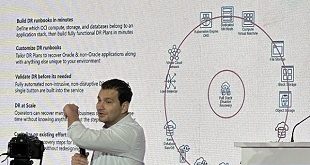
By Independent Team
The past courts the future. Why? An insight into the President’s visit to Kisumu.
Why exactly did Kenya Prime Minister Raila Odinga visit President Yoweri Museveni at State House, Entebbe on March 5?
That was the second time the two were having a tete-a-tete in a space of two weeks. Museveni had earlier visited Kisumu in Kenya on February 18 and been hosted to a glamorous dinner tthat is still the talk of town.
Beneath the official narrative – launching and fundraising for the Great Lakes University’s Kisumu Education Trust in the Kisumu case – the visits, according to well placed sources, was a continuation of efforts to strengthen relations between Museveni and Raila Odinga.
The duo has never enjoyed a cordial relationship and things appeared to sour when Museveni became the first head of state to congratulate, Raila Odinga’s nemesis, President Mwai Kibaki, in the aftermath of Kenya’s 2007 presidential elections.

The Kisumu meeting follows one last December at Busoga University where Odinga was the chief fundraiser, and the very first one in 2010 when Odinga appeared with Museveni on the latter’s campaign trail.
Museveni and Odinga also spent a night together in the same hotel in the Israel city of Jerusalem. The official explanation was that they just happened to “bump” into each other. But details of the meeting showed Museveni was in Israel to purchase arms.
In 2007 Odinga felt he had been rigged out of and which a great majority of people had disputed including Kenya’s head of the Electoral Commission, Samuel Kivuitu.
He was reportedly riled when he became the first president to congratulate Kibaki.
Museveni is also rumoured to have sent Ugandan troops across the border to Kenya in an attempt to quell pro-Odinga riots in which supporters attacked each other in ethnic conflicts that broke out as a result of election disputes. Museveni’s alleged intervention sparked attacks on Ugandan interests in Kenya.
Later in May 2009, Museveni is reported to have referred to the Luo, Odinga’s tribe mates, as “mad” when some people vandalised the railway line in fury that Uganda was trying to seize Migingo Island, which they considered part of Kenyan territory.
The need for better relations between the two, however, comes in anticipation by Uganda of an Odinga presidency. Such expectations are strongly based in a November 2011 Ipsos-Synovate poll showing that if Kenya were to hold elections then, Odinga would be the most popular candidate polling 34 percent.
As such, some people within Museveni’s circles see as an urgent matter the need to be on good footing with Odinga before they have to address him as His Excellency.
Better relations are also informed by the cold fact that Kenya is Uganda’s major trading partner and established access to the sea. Previous acrimony between the two countries has strained Uganda’s economy and led many people to wish there was alternative access to the sea.
In fact, the attendant risks to over relying on Kenya have occasioned whispers to open up routes through Dar es Salaam but the logistics of breaking such new ground make it hardly possible.
Regional strategy, local issues
Museveni’s relentless efforts to make amends in the region, first with Rwanda’s President Paul Kagame and now Kenya’s Odinga, come at a time of increasing pressure for him at home and isolation on the international stage.
Museveni’s move are beginning to fuel speculation that it might be his way of securing guarantees that these countries will not harbour armed rebellions against him, the possibility of which grows more likely as Museveni’s unpopularity continues to rise at home.
In the run-up to the February 2011 presidential election in Uganda that Museveni won, reports that Odinga had hosted a campaign strategy team of his opponent, former US Under-Secretary General Olra Otunnu, were widely circulated.
Besides making amends, however, sources close to Odinga say the two leaders, among many things, discussed ways of getting Museveni’s pet project the political federation, or some form of it, up and running.
“Our visit in Kenya is based on our need to enhance the East African Political Federation and the unity [in the region],” a source privy to the meeting noted.
This source further explained how there was mutual understanding that only political will was missing to fully unite the region’s peoples “disenfranchised and balkanised in 1884-6 in the Berlin Conference” and guiding them “to rediscover, reorganise and redirect their focus towards building a united and progressive East Africa”.
“If Uganda and Kenya and maybe one or two more countries come forward and started the political federation, especially after the elections in Kenya, it would pick momentum,” claimed our sources.
They cited for illustration the United States, whose federation began with only 13 of the current 50 states and one district, and the European Union, which, too, started with few countries. The EU, though, is not politically federated.
President Museveni has used the same illustration before while responding to the report of the 2004 Amos Wako Committee instituted to study public views and perceptions towards fast tracking political federation.
According to the timeline the East African Community is following, the protocol sanctioning the political federation needs to have been signed by next year. There is apprehension, however, that it’s unlikely that deadline will be met because it’s overly ambitious.
Also, some member countries, Tanzania in particular, don’t seem enthusiastic about fast tracking this protocol, or any other for that matter. They have argued for well thought out and slowly arrived at protocols as being easy to own and implement than those that are deadline driven.
There’s also the matter of retirement of Beatrice Kiraso, who is currently in charge of fast tracking the protocol. Time will be lost in transitioning from her to her successor.
If a political federation between Kenya and Uganda, or whatever is agreed to, is followed through, experts warn not only of the practical difficulties of actually achieving it but also the negative perception it would send out to other member countries, and its potential to alienate Tanzania and jeopardise the entire future of the East African Community.
A linear federation, as what such an idea, by all intent and purposes, would be, would be alright under the principle of variable geometry, which allows countries to progress in cooperation at different speeds, only if the protocol on political federation had been signed. As it is then, it would go against the treaty that establishes the EAC.
The move also does not augur well, considering that Uganda remains one of the poorest implementers of the customs union protocol and would thus be seen as jumping the gun. This along with continued existence of non-tariff barriers in other partner states breeds a state of dissonance.
“The political federation, according to our treaty is the ultimate goal of our integration process. Which means, its realisation depends on successful implementation of the customs union and common market protocol,” said a top official in Kenya’s Ministry of East African Affairs.
This official added that governance issues and capacity of institutions in Kenya and Uganda would have to reach a certain acceptable minimum before they can think of politically federating. As they stand now, it is very complicated, he says.
To add, Dr Kasaija Phillip Apuuli, a lecturer at Makerere University, who has researched and written about the EAC and political federation in particular, asked, rather rhetorically, “How would they share sovereignty? How would they operate outside Arusha, which still has the seat of the Community?”
Dr Kasaija further wondered, “In the spirit of consensus, all the five member countries need to move together. How would it look with the other members?”
Yona Kanyomozi, a former member of the East African Legislative Assembly, warns such a move is misdirected and could potentially have “tragic” effects on the region.
“I used the word tragic advisedly because such a move would push Tanzania in the direction of SADC [South African Development Cooperation, where it is a member] and getting it back would be difficult,” Kanyomozi said.
Moreover, he added, “It would kill the spirit of the East African Community as we know it.”
Kanyomozi advised Uganda and Kenya to be patient and tackle the issues that concern Tanzania, such as presidential term limits, which Uganda scrapped in 2005 making itself the odd country in a region, rather than putting it in a fix.
“Tanzania aided Uganda’s first liberation against [Idi] Amin. You don’t want to push them against the wall and force them whether to be part of the federation or not,” Kanyomozi noted.
“It is better to move with Tanzania because of [such] historical connections to Uganda, but also because it has the largest resource base in terms of raw materials, and has set an example in governance that the Community could benefit from,” Kanyomozi went on.
Early this month, Museveni, who has been the most enthusiastic president of all about political federation, seemed to ease up on the project. He went so far as mentioning its likely impossibility.
While it may seem strange that only three weeks later Museveni would insinuate an about turn, Uganda’s quarter century president to date has made a myriad about turns for anyone to put this beyond him.
 The Independent Uganda: You get the Truth we Pay the Price
The Independent Uganda: You get the Truth we Pay the Price



